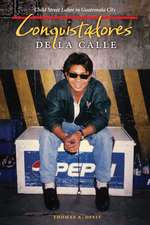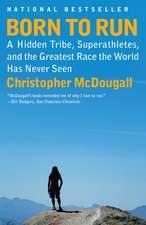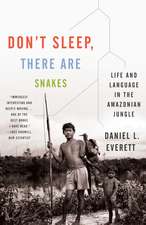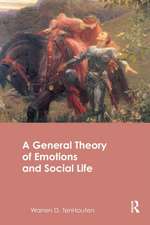Ethnography after Humanism: Power, Politics and Method in Multi-Species Research
Autor Lindsay Hamilton, Nik Tayloren Limba Engleză Hardback – 5 iul 2017
Ethnography after Humanism suggests how researchers could conduct different forms of fieldwork and writing to include animals more fruitfully and will be of interest to students and scholars across a range of disciplines, including human-animal studies, sociology, criminology, animal geography, anthropology, social theory and natural resources.
Preț: 889.92 lei
Preț vechi: 1085.26 lei
-18% Nou
Puncte Express: 1335
Preț estimativ în valută:
170.30€ • 176.72$ • 142.35£
170.30€ • 176.72$ • 142.35£
Carte tipărită la comandă
Livrare economică 17-31 martie
Preluare comenzi: 021 569.72.76
Specificații
ISBN-13: 9781137539328
ISBN-10: 1137539321
Pagini: 195
Ilustrații: VIII, 210 p.
Dimensiuni: 148 x 210 x 20 mm
Greutate: 0.41 kg
Ediția:1st ed. 2017
Editura: Palgrave Macmillan UK
Colecția Palgrave Macmillan
Locul publicării:London, United Kingdom
ISBN-10: 1137539321
Pagini: 195
Ilustrații: VIII, 210 p.
Dimensiuni: 148 x 210 x 20 mm
Greutate: 0.41 kg
Ediția:1st ed. 2017
Editura: Palgrave Macmillan UK
Colecția Palgrave Macmillan
Locul publicării:London, United Kingdom
Cuprins
1. Introduction.- An ecology of ethnographic methods.- Part 1: Foundations.- 1. Why ethnography?.- 2. Listening for the voices of animals.- 3. What can ethnography be?.- Part 2: Field-work.- 4. Visual methods.- 5. Sensory methods.- 6. Arts-based methods.- 7. Hybrids of method.- 8. People writing for animals.- 9. Conclusion: Beyond humanism and into the field.
Notă biografică
Lindsay Hamilton is Undergraduate Director at Keele University Management School, UK.
Nik Taylor is Associate Professor of Sociology at Flinders University, Australia.
Textul de pe ultima copertă
This book argues that qualitative methods, ethnography included, have tended to focus on the human at the cost of understanding humans and animals in relation, and that ethnography should evolve to account for the relationships between humans and other species. Intellectual recognition of this has arrived within the field of human-animal studies and in the philosophical development of posthumanism but there are few practical guidelines for research. Taking this problem as a starting point, the authors draw on a wide array of examples from visual methods, ethnodrama, poetry and movement studies to consider the political, philosophical and practical consequences of posthuman methods. They outline the possibilities for creative new forms of ethnography that eschew simplistic binaries between humans and animals.
Ethnography after Humanism suggests how researchers could conduct different forms of fieldwork and writing to include animals more fruitfully and will be of interest to students and scholars across a range of disciplines, including human-animal studies, sociology, criminology, animal geography, anthropology, social theory and natural resources.
Ethnography after Humanism suggests how researchers could conduct different forms of fieldwork and writing to include animals more fruitfully and will be of interest to students and scholars across a range of disciplines, including human-animal studies, sociology, criminology, animal geography, anthropology, social theory and natural resources.
Caracteristici
Offers an in-depth consideration of the political, philosophical and embedded power structures of methodological choices in studying multi-species relationships in organizations Uniquely draws from multiple disciplines such as business, sociology and philosophy Uses numerous real world case studies














